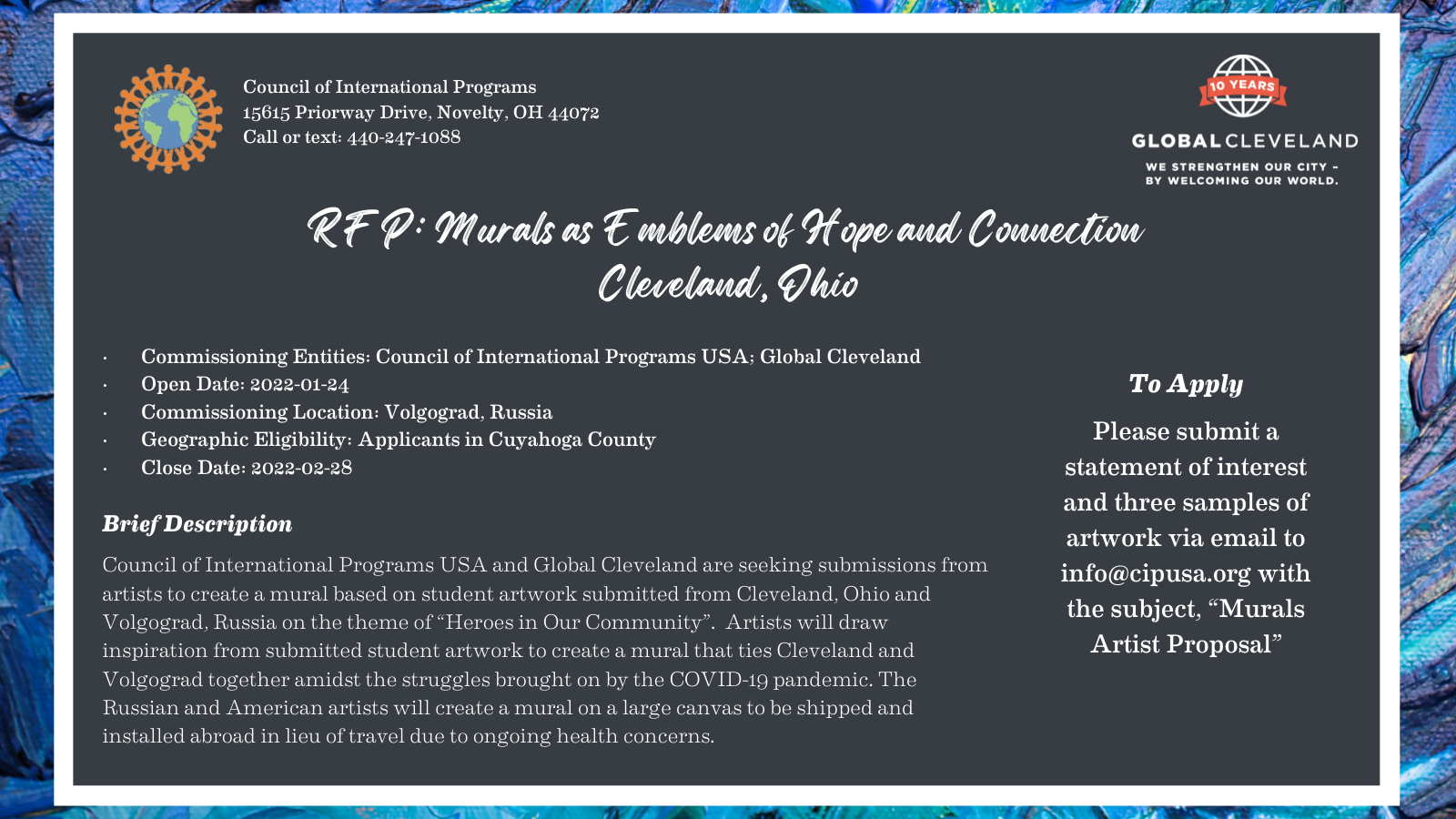A Conversation With Albina Ghazaryan
Morrison Products - Production Associates

Morrison Products is hiring Production Associates.
Production Associate, 2nd Shift – Cleveland, OH
Production Associate, 3rd Shift – Cleveland, OH
Applications can be sent to [email protected]
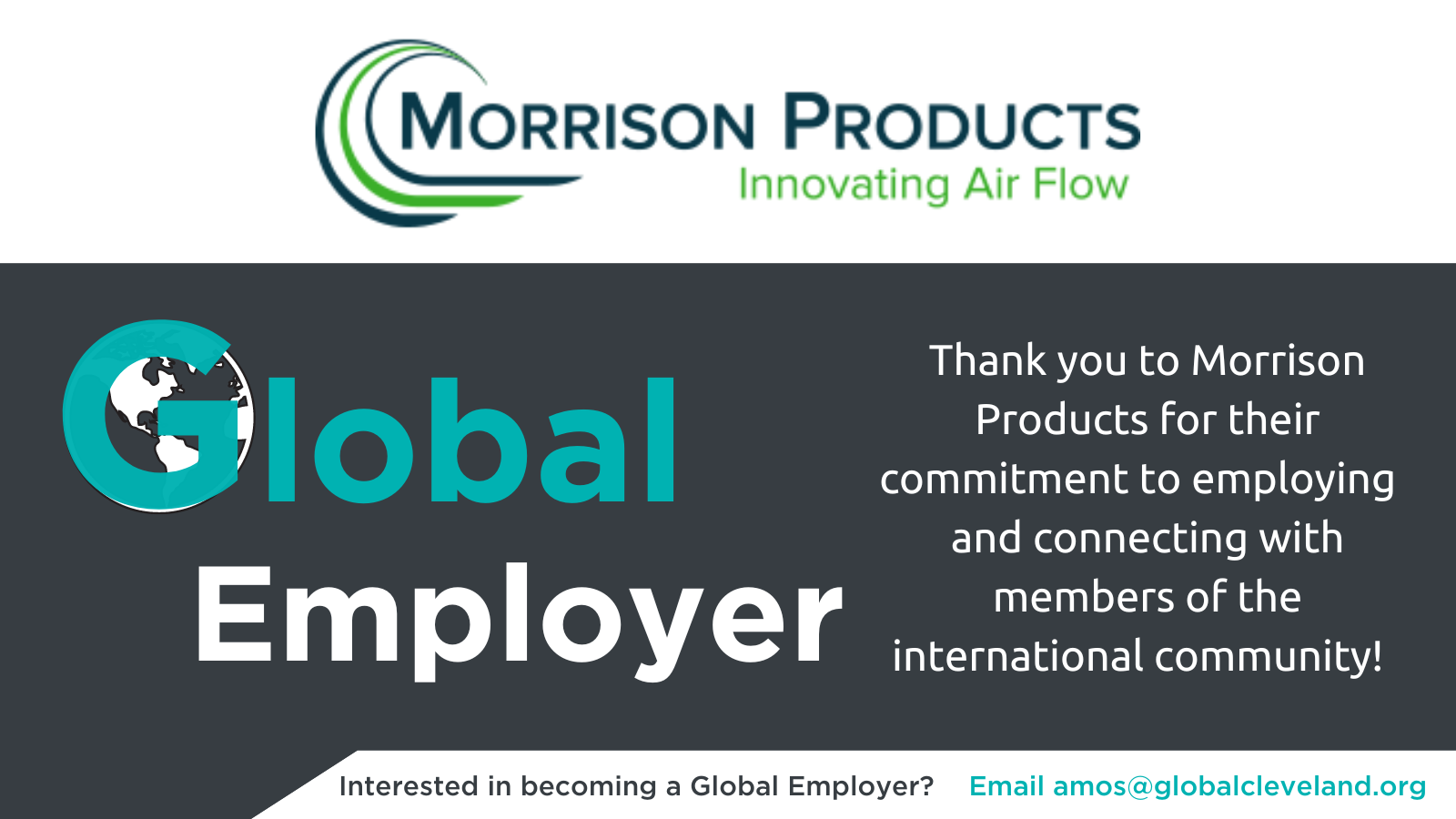
Wrap Tite - Multiple Positions
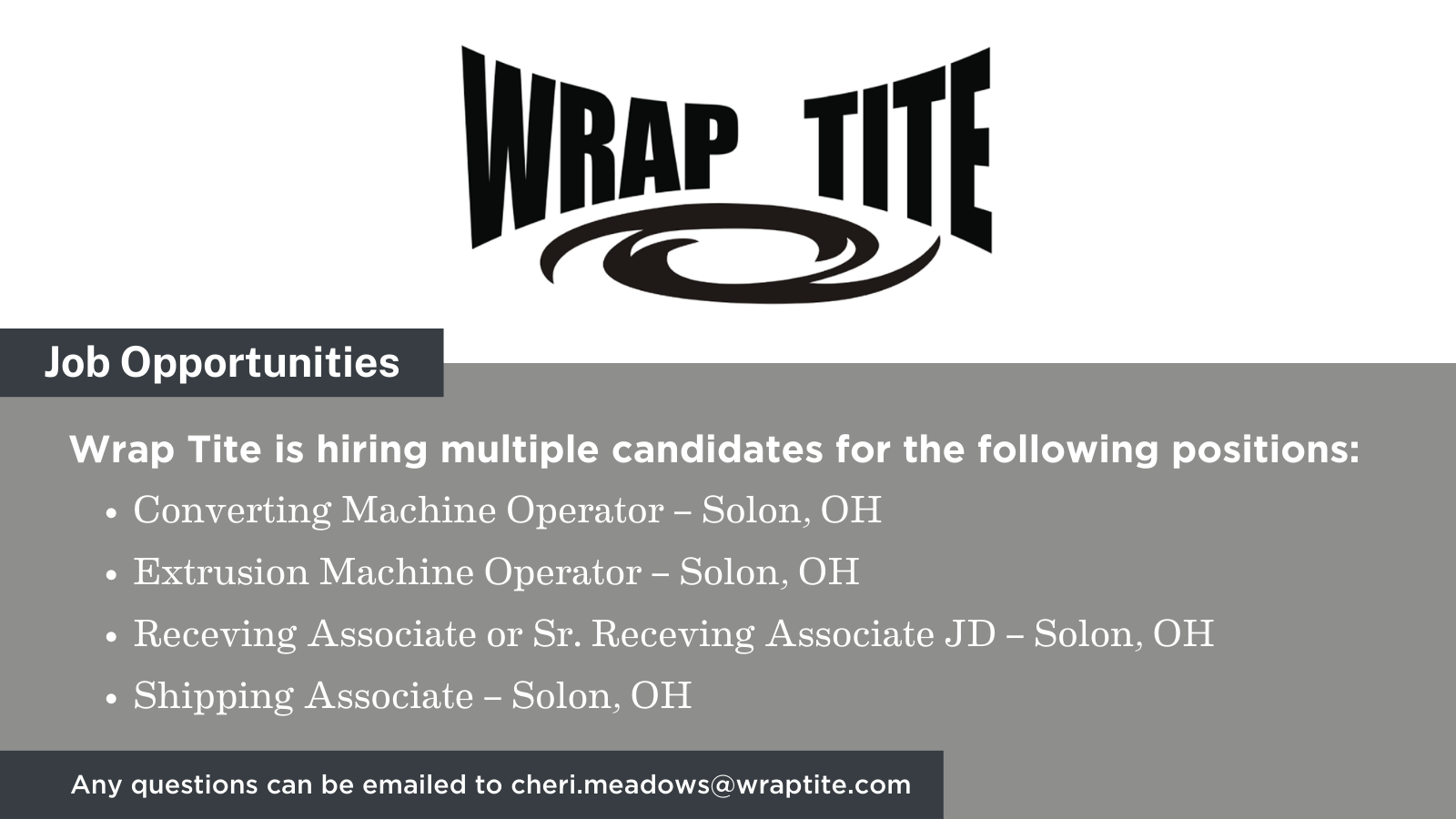
WrapTite is hiring full and part time positions:
Converting Machine Operator – Solon, OH Extrusion Machine Operator – Solon, OH Receving Associate or Sr. Receving Associate JD – Solon, OH Shipping Associate – Solon, OH
Wrap Tite’s core philosophy is people over process. Their culture has been instrumental to our success and has helped us attract and retain stunning colleagues, making work here more satisfying.
Our associates take tremendous pride in their chosen professions, the quality products we create and sell and the positive difference our company makes.
- Wrap Tite is a growing, stable employer with many career opportunities available.
- If you see yourself thriving in our culture, we want to talk to you.
- At Wrap Tite, we are more than a workplace, We Are Family.
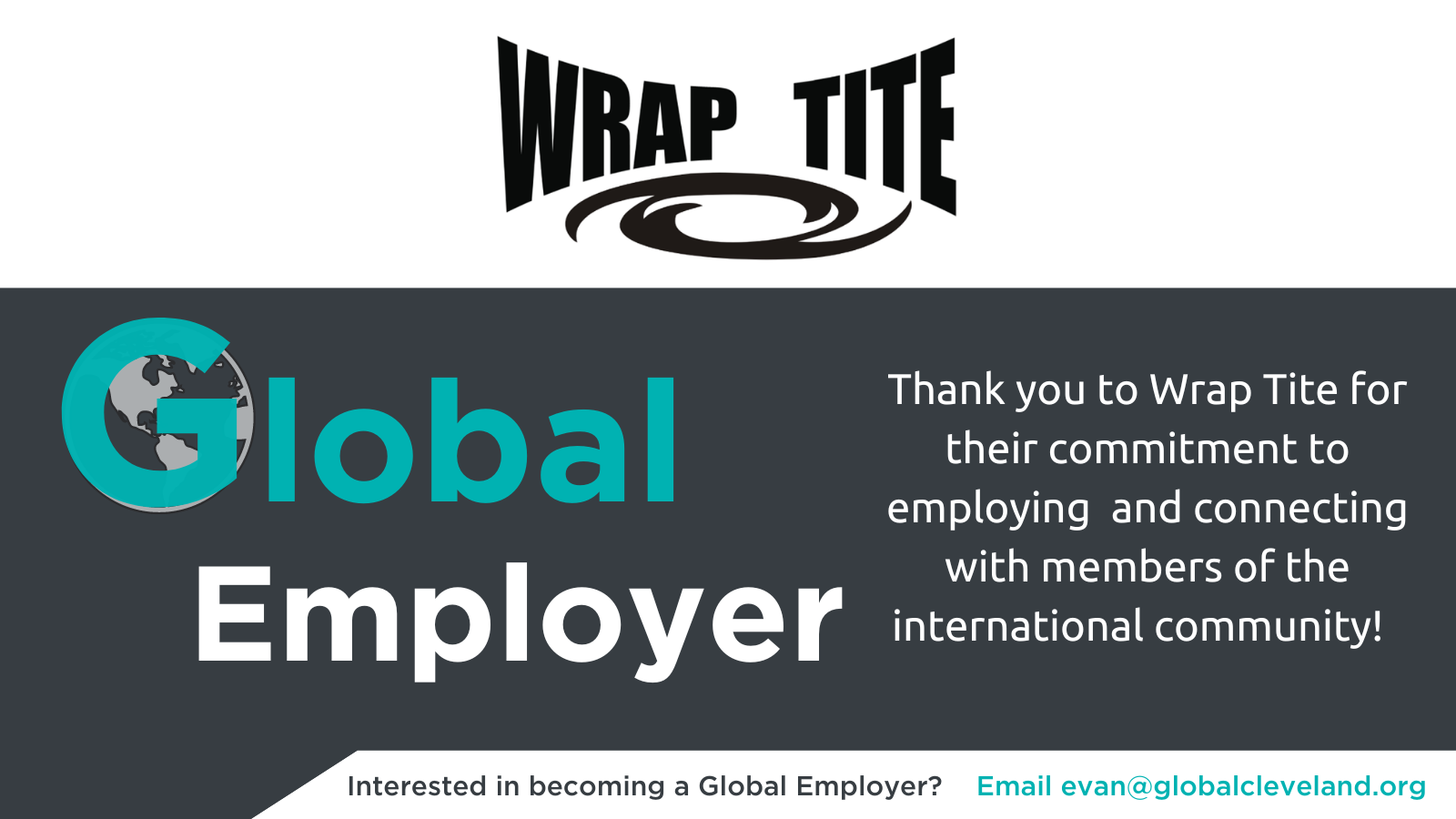
Migration is Economic Development
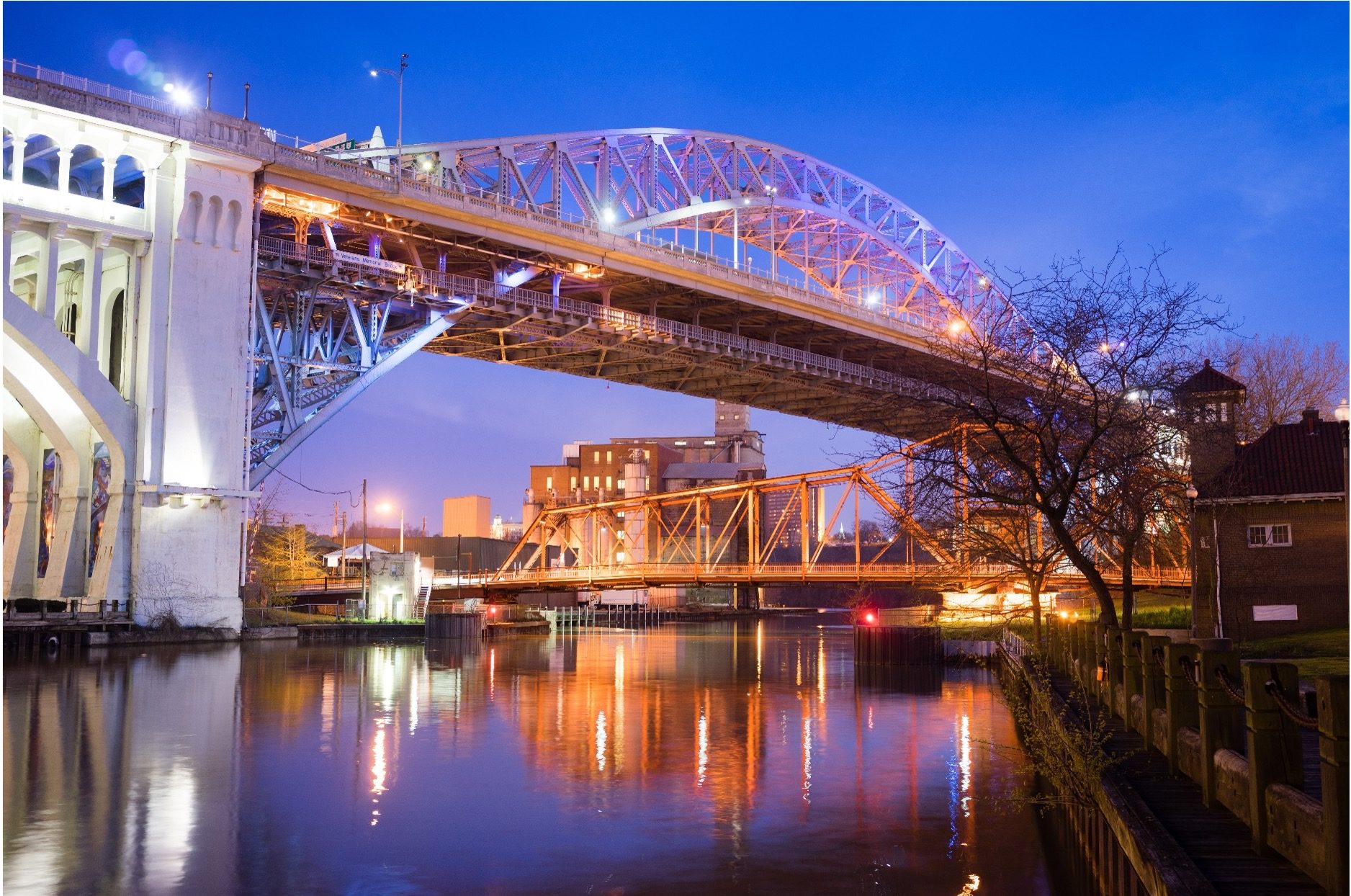
Executive Summary
The sponsor of this analysis, Global Cleveland, is an organization, but global Cleveland is also a reality. Elaborating, when it comes to the task of economic and community development, think of a city as a feather in the wind, or a stick in a rapid of water. Global forces push and pull at places, affecting a city’s relevance, or it’s standard of living. Yet some indicators are better measures of where a city fits into the global order of things than others. This analysis shows that standard measures of “success”, like population size, are relics of a bygone era where size mattered. In today’s idea economy, a better measure is gauging the quality of life in city, not the quantity of lives. This analysis looks at GDP per capita for the nation’s large metros, defined as “the amount of output or income per person in an economy…that’s indicative of average productivity or average living standards.[i]”
The GDP per capita in the Cleveland metro is currently $ 57,700 and ranks 78th out of 374 metros. This is up from an inflation-adjusted $51,320 in 2010. To the extent Cleveland can prepare for progress entails examining what explains progress. The analysis looked at what features are driving GDP per capita growth across America’s metros from 2010 to 2019. To do this, Rust Belt Analytica deployed a machine learning algorithm called permutation feature importance. This is our “Progress Model”. Out of hundreds of variables analyzed, two clusters of features dominated the model results: educational attainment and migration. That is, the rate of a metro’s GDP per capita growth could be predictively explained by the educational attainment of a region, and the migration rates of a region. Migration features included the in-migration of college- and non-college-educated foreign born, and the in-migration of college- and non-college-educated native born, particularly if the domestic migrants were arriving from the Northeastern or Western parts of the U.S. This latter migration pattern of coastal-to-inland migration has been dubbed “The Rise of the Rest”, characterized as the convergence of American tech labor from the costly coast into the American heartland.
It is a pattern of migration that highly-educated immigrants have in fact been doing for some time. The analysis found that the percent of Cleveland’s immigrants with an advanced degree was 21.4%, which ranked 8th out the nation’s largest 40 metros. Interestingly, 6 out of the top 10 most highly-educated cities for immigrants were in the geographic area of the Rust Belt, led by Pittsburgh.
The analysis finds that migration is crucial to the evolution of cities. Migration does not only allow for the accumulation of human capital, but for global connectivity as well. Connectivity is part and parcel with the act of migration, allowing for the deepening of a city’s “thought bank”. This depth of ideation is crucial to the process of innovation which, in turn, is crucial economic evolution. Put another way, migration is economic development. It is today. It was yesterday. And it will be tomorrow. The issue for Cleveland is whether the region can leverage its global assets to incur its global relevance, and ultimately the increased well-being of its people.
Global Cleveland Intern
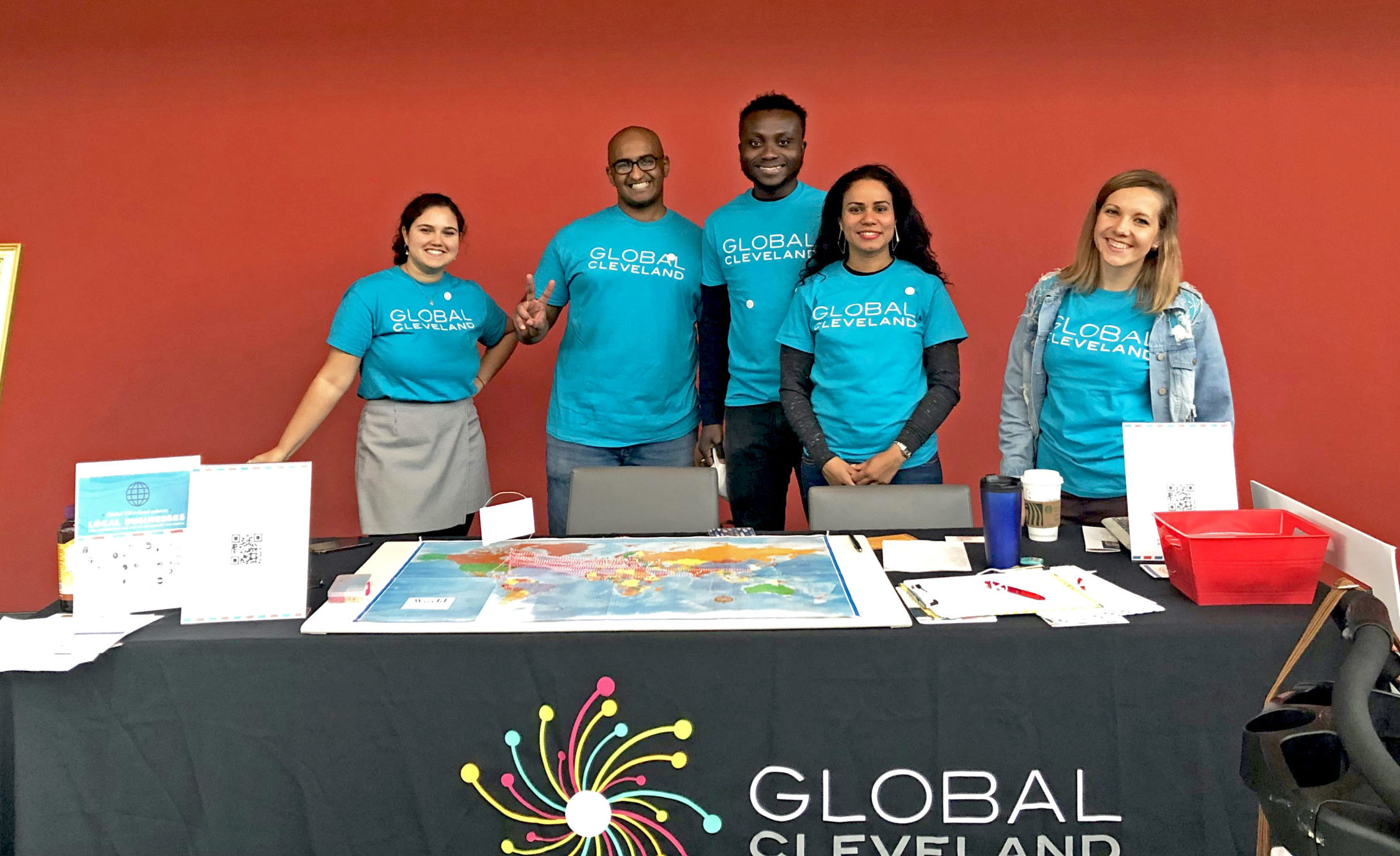
Position: Global Cleveland Intern
Reports to Josephine Manco
Compensation: n/a
Schedule: Part-time, 12 – 20 hours a week
Length of time: minimum 2-month commitment
Location: Remotely – until further notice
Internship Opportunities:
Global Cleveland provides internships to students interested in the non-profit sector on a year-round basis. Interns will have a variety of opportunities including:
- Participate in the management of programs for newcomers by coordinating volunteer and client databases and updating program and participant contacts.
- Serve as a contact for inquiries about programs for newcomers and visitors.
- Assist in updating program materials such as brochures, newsletters, websites, manuals, and forms.
- Assist in developing partnerships with local community organizations and educational institutions.
- Research the development of program-related information.
- Assist the director of volunteer services with volunteer orientations, preparing documents, training support, and special events.
- Work with the development officer on fundraising activities including researching funding prospects and drafting letters and proposals.
Qualifications:
- Education: Current college student
- Experience: Experience in program coordination/management a plus
- Passion for Cleveland and Northeast Ohio
Required skills:
- Excellent writing, communication, and customer service skills.
- Delivers quality work product in a timely manner and meets deadlines.
- Proficiency in MS Word, Excel, spreadsheets, and databases.
- Understanding of management information systems: an online database and electronic filing system
- Ability to learn and utilize programs including, but not limited to Gmail, survey monkey, and Salesforce.
- General office skills, including typing, filing, answering telephones, scheduling, copying, scanning, etc.
- Effective organization skills, critical thinking, and ability to multi-task.
Desired skills:
- Interest in and knowledge of the nonprofit sector
- A great sense of humor
- Bilingual
How to Apply:
Email: [email protected] and mention the session you are applying for “Summer” or “Fall”.
GCP Internship Opportunities

- GCP Summer Internship Program Position Descriptions 2021
- GCP Summer Internship Program Guidelines & Application Requirements 2021
- GCP Summer Internship Program Applicant Form 2021
- GCP Employment Application Form 2021
- Background Check Applicant Release Form 2021Affirmative Action Form (Pre-Hire) 2021
Fier and Cleveland - By Ezra Ellenbogen
Fier and Cleveland
- Written by Ezra Ellenbogen
Fier, Albania is a beautiful city of nature and history, with a population of 56,297.[1] The city is a well known travel destination, its most attractive landmark being the ruins of the ancient Illyrian city of Apollonia.[2] In 2006, under the Honorable Mayor Frank G. Jackson, Fier was partnered as a sister city with Cleveland.[3]
The first large arrival of Albanian immigrants to Cleveland was in the 1890s, as a part of the larger influx of Italian immigration.[4] This group was known as the Arbëreshë; they were descendants of Albanians who had fled to Southern Italy to escape the Ottoman Empire. The second significant arrival of Albanian peoples into Cleveland mostly originated from Korçë, an educational and cultural center in Southern Albania. The vast majority of this second wave were seeking new labor opportunities in Cleveland. Most had little to no former education or resources. Most were planning to immigrate temporarily, and most were men. They were seeking a better financial future. Eventually, many settled their families with them in Cleveland. These groups primarily concentrated on the West Side near Detroit Avenue and Linndale, though some did settle on the East Side around E. 30th and St. Clair.
Statewide, fewer than two thousand Albanians had settled by 1914. Most Albanian immigrants settled near Lake Erie. Most found work in factories or as day laborers. Albanian institutions followed suit; businesses sold traditional Albanian foods and products, and a total of three Albanian newspapers were created: Dielli, Liria, and Shqiptari i Lire.[5]By the start of the 1940s, approximately 1,000 Albanians resided in Cleveland.
The next major wave of Albanian immigration occurred Post-WWII. Numerous groups of Albanians had been displaced and had ended up in refugee camps in Italy, Germany, and Austria. From there, many immigrated to Cleveland. However, in 1946, when Enver Hoxha’s government took control of Albania, no Albanians were allowed to leave their home. New immigrants to Cleveland founded social clubs and religious institutions; in 1938, the Society of St. E. Premte was established by Orthodox Christain Albanians, which is still in use today.
During and post WWII, the major incentives for Albanian immigration were: escaping conflict back home, economic motives, and seeking to build a new life, as countless Albanian homes and businesses were destroyed in WWII and following conflicts. The highest concentrations in Cleveland remained on the West Side and its suburbs, particularly Lakewood.
The most significant influx of Albanian immigration to Cleveland came after 1992, when Albania’s political regime fell. Immigration from Albanian areas exploded, especially from Fier and Kosovo. Two major factors made Cleveland a well-sought home for this new wave of immigration. First: Albanian American Cleveland Councilwoman Dona Brady made significant and constant efforts to help Albanian refugees resettle. Second: during the 1999 war in Kosovo, the then American President Bill Clinton selected Cleveland as one of five cities to resettle refugees and displaced persons from the conflict. In 2006, The Honorable Mayor Frank G. Jackson founded a sister city relationship with the Albanian city of Fier in recognition of the flourishing community.
The Albanian American Association of Cleveland was founded in 1998. The organization went on to become one of the most prominent sources of organization and longevity for Cleveland’s Albanian community through cultural engagement, educational assistance, humanitarian aid, and supporting the community.[6] The most critical, long lasting, and well known engagement of the association and its partners was the creation of the Albanian Cultural Garden.
Spearheaded by immigration attorney and author Richard Herman, City Councilwoman Dona Brady, and Federation Of India Community Associations of NE Ohio (FICA) president Asim Datta, the process of creating an Albanian addition to the Cultural Gardens started on May 30th, 2012.[7] Cleveland architect Jim McKnight designed the Garden; its most prominent feature, a statue of Mother Teresa, was made by renowned Albanian artist Kreshnik Xhiku. The dedication ceremony was attended by important figures, including Mayor Frank G. Jackson and former Albanian President Bujar Nishani. The dedication was also a commemoration of the 100th anniversary of Albanian independence.[8]
The “Second Phase” of the Albanian Gardens was developed in 2013. It included a fountain from the 1920s rediscovered by Councilwoman Brady, walkways, and lights, making the area perfect for community events. The dedication of the new additions was attended by the then mayor of Fier, Baftjar Zeqaj, as well as a representative of the Albanian Prime Minister. In recent years, community events from operas to parades have been held at the Albanian Cultural Gardens. Most recently, during the Cultural Gardens’ 2019 One World Day Parade of Flags, Albanian Clevelanders wore traditional and cultural garb to celebrate their heritage, marching with Albanian flags (pictured at the start of the article).[9]
In 2014, Cleveland hosted highly acclaimed Albanian artist Fate Velaj and his exhibit, “Albania - Seen Differently.” Many of his works were on display in the Cleveland City Hall Rotunda. He hoped to reflect not only a new perspective of Albanian natural and architectural beauty, but also showcase the connection between Albanians and Cleveland.[10]
Albanian Clevelanders today make up a prominent and thriving community of the region. With numerous cultural and community-driven connections to Fier and Albania as a whole, Albanian Clevelanders have contributed to and embellished the city’s diversity and culture. Historic efforts of the sister city movement, from cultural showcases at fairs to operas, have connected the Albanian population of Greater Cleveland not only to Albania, but also establishing itself as a center for community and relationship building. Cleveland’s historic ties to Albania and Albanaian immigrants have made the community one of prominence and camaraderie.
- by Ezra Ellenbogen
Ezra's blog: One Page Stories
[1] https://www.worldometers.info/world-population/albania-population/
[2] https://www.intoalbania.com/city/fier/
[3] https://case.edu/ech/articles/cleveland-sister-city-partnerships
[4] https://case.edu/ech/articles/a/albanians
[5] http://ohiohistorycentral.org/w/Albanian_Ohioans
[6] http://albaniansofcleveland.org/index.php?p=home&op=more
[7] clevelandpeople.com/groups/albanian/albanian.htm
[8] https://www.clevelandculturalgardens.org/albanian-cultural-garden/
[9] http://www.clevelandpeople.com/events/2019/owd-2019-parade-3.htm
[10] https://www.youtube.com/watch?v=52FwyE5isXw
Klaipėda and Cleveland - Ezra Ellenbogen
Klaipėda and Cleveland
- Written by Ezra Ellenbogen
Klaipėda, Lithuania is a beautiful seaside town, located where the Curonian Lagoon empties into the Baltic Sea. The city is the most prominent point for international trade that goes through or into Lithuania, and is the only large sea port. The port can manage up to 40 million pounds of cargo annually.[1] The population of the Klaipėda is near 200,000.[2]Klaipėda’s history is interesting and intricate.
The 1250s were a memorable decade: the Seventh Crusade ended, Nichiren Buddhism got popular - good times. Also in the 1250s, Teutonic Knights established Klaipėda on an empty shore, calling it Memelburg.[3] The Teutonic Knights had been told to convert or destroy the local Pagan Baltic tribes, and chose modern day Klaipėda as a base. Originally, the area consisted of just a castle and a small town. In the 16th century, the local Teutonic Order secularized, and Memelburg became part of Prussia. It was then that the town started being called Klaipėda. Klaipėda was briefly Prussia’s capital during the Napoleonic wars, when the royal family retreated there. The 19th century brought thousands of new people to Klaipėda. In 1854, a devastating fire burned down two-thirds of the city, but it was rebuilt.
By around 1871, the first Lithuanians had immigrated to Cleveland. Early Lithuanian immigrants in the city concentrated around St. Clair and Oregon Avenue (which is now Rockwell Avenue).[4] The early Lithuanian community in Cleveland established the St. George’s Lithuanian Church, which became the center of activity for the predominantly Catholic community. Around that time, only around 1,000 Lithuanians lived in Cleveland.
Back home in Lithuania, the entire Klaipėda region had been absorbed into the Entente States from Germany. The region was ruled by the League of Nations until the Lithuanian supported Klaipėda Revolt of 1923. It was successful, and the League of Nations and the Entente states recognized the transfer of the Klaipėda region into Lithuania as an autonomous incorporation. At this time, Klaipėda was home to 45,000 people, 70% of whom were German.
By 1930, back in Cleveland, the Lithuanian population had grown to over 10,000 people. Cultural and religious centers, newspapers, and communities were being formed. A major reason for the spark in Lithuanian immigration to the US was the rise of political tensions at home.
The rise of Nazism in the 1930s spread into Klaipėda, but not without strong resistance. Germany sought to annex Klaipėda, despite being former allies. Lithuania was unable to gain major support to keep Klaipėda and gave in to the ultimatum, ceding it to Nazi Germany.
Nearing the end of World War II, Klaipėda was overrun by Soviet armies. At one point, the invading forces only found 20 inhabitants left, the rest having immigrated or died. The city was captured and incorporated into the Lithuanian Soviet Socialist Republic. Through the 1940s and 1950s, primarily Russians and Lithuanians repopulated the city. Klaipėda’s population skyrocketed; even just by 1950 it had grown larger than pre-war years. The region of Klaipėda soon became a major economic driver for Lithuania.
Post-World War II in Cleveland, there was a major influx in Lithuanian immigrants. Approximately 4,000 Lithuanians arrived in Cleveland, among them was Antanas Smetona, a former president of the Lithuanian Republic. Institutions established by these new immigrants tended to be distinct from those established by the first wave; as they mostly sought to renew or recreate organizations that had been banned or had collapsed in Soviet Lithuania.
Numerous organizations organized Lithuanians in Cleveland around culture, politics, language, and more. For instance, the Lithuanian-American Council lobbied during and after the war to bring attention to the troubles of the Lithuanian state under Soviet rule. Local organizations were also quick to organize around teaching culture and language. In 1973, a new community center, Lithuanian Village, was built along E. 185th St, and community activity shifted towards there and eastern suburbs.
During the re-establishment of an independent Lithuanian state, Cleveland was recognized for the Lithuanian community’s significant role in lobbying for liberation. The leader of the new state, Vytautas Landsbergis, visited Cleveland multiple times seeking support from local groups. When the US recognized the new Lithuanian state, the new US ambassador to it, Darryl N. Johnson, made his first visit as ambassador to Cleveland.
In 1992, under Mayor Michael R. White, an official sister city relationship between Klaipėda and Cleveland was formed.[5] In the modern day, Lithuanian-Americans in Cleveland interact frequently with their home state, with the establishment of business ties and assistance.The population of Lithuanian-Americans in the city numbers around 16,000.
The relationship and its history has been critical to both sides. Cleveland gained huge cultural and economic boosts from waves of Lithuanian immigrants, and, in the modern day, the city has helped Klaipėda with medical services and facilities, seeking to help improve the conditions of their sister city. Under the Hope Medical Mission, Cleveland nurses and doctors, in an effort founded by Dr. Gerald Goldberg, have worked directly with Lithuanian medical offices and workers to make medical treatment more accessible and better quality.[6] Not only that, but the group has worked to directly treat local patients and improve the quality of equipment available
Altogether, Cleveland and Klaipėda have had a long history of working together. Cleveland helped serve as a large base for lobbying against Lithuanian oppression, and works today on spreading culture and improving medical facilities in Klaipėda. Klaipėda and Lithuanian Americans in Cleveland have contributed greatly to work, culture, and community formation in the city. Despite being thousands of miles apart, Klaipėda and Cleveland have managed to both be critical to each other’s history.
- By Ezra Ellenbogen
Ezra's Blog - One Page Stories
[1] http://www.cleveland-oh.gov/CityofCleveland/Home/Government/MayorsOffice/Office_of_Government_Affairs/SisterCities#klaipeda
[2] https://worldpopulationreview.com/countries/lithuania-population
[3] http://www.truelithuania.com/history-of-klaipeda-memel-447
[4] https://case.edu/ech/articles/l/lithuanians
[5] https://case.edu/ech/articles/cleveland-sister-city-partnerships
[6] https://www.clevelandjewishnews.com/archives/rx-for-transforming-lives-of-lithuanians/article_c5fc93ae-0ef5-5149-a2a8-54a493d355fd.html
How to be an Emotional Ally to the Immigrant Community - By Nathanie Y. Yaskey
How to be an Emotional Ally to the Immigrant Community
- Written By Nathanie Y. Yaskey
When I first heard the statement, “we are living in unprecedented times,” I chuckled. The word “unprecedented” is so grandiose within itself that it reflexively induces a cringy feeling of melodrama.
I write comedy, I tell jokes on stage, I prefer to keep things light whenever and wherever possible. This was my attitude going into quarantine. I (like many others) thought the world was just being melodramatic and as soon as we got over this “flu,” Oprah would finally run for president, Cardi B would be her trusted Vice President, Beyoncé would be Secretary of State, and our new national anthem would be “Who Run the World? Girls!” … SPOILER ALERT: things didn’t exactly turn out that way.
Now, over six months into quarantine, I shudder to think that I ever remotely found entertainment in the current state of affairs. As social unrest grows louder, as violence catapults at an alarming rate, as extremist groups are birthed from pain and frustration, as othered bodies are slayed and politicized, as society increasingly places more value upon property than humanity, as life as we know it shatters upon the golden chandelier fan of America, all I can say is; “Um. Yeah. We’re definitely living in unprecedented times.”
As an African immigrant and naturalized Black citizen, I have experienced a range of emotions throughout my quest to naturalization, but nothing as sharp and soul-piercing as what quarantine has forced me (and so many other immigrants) to reckon with: fear.
We see ourselves unfairly generalized in print, we see our parent’s sacrifices dismissed, we see our pain spectacled. These experiences reduce us to a state of sheer fear and panic.
If you are looking for ways to support and peacefully embolden the immigrant community—even whilst safely distancing— please continue reading.
- More than anything else, we want to be heard. The acknowledgement of our humanity and right to occupy space can be as simple as asking, “How are you feeling?” And genuinely listening to our response.
- Silence speaks. If you don’t know what to say, that’s okay! Few things are more upsetting than describing a personal experience to someone from another cultural background who then morphs said experience into a particular language, code, or context that they are more comfortable with addressing. For instance, the time my Dad was publicly demeaned for having an accent is not the same as the time your Dad was publicly demeaned for incorrect grammar; I’m sure that both were scaring and painful in their own way, but reframing and comparing trauma is a dangerous game for all involved parties.
- Dialogue, not monologue. Talk to us, not at Over the years, I’ve come to realize one universal truth: dialogue empathizes, monologue sympathizes. Sympathy rarely does much good.
- Accentism. Guess what, folks?! It’s real! It’s discriminatory and it is not going anywhere until its damaging effects are properly addressed. My father is the smartest man I know, yet when he makes phone calls in America, I speak on his behalf. Not because he’s not fluent in English (he’s actually fluent in four languages), rather, the level of respect that he is treated with drastically changes when a stranger associates his accent with mutism. If you see this being done in public, call it out. It has been my experience that most people don’t even realize that their tone is inappropriate until they are confronted about it. Remember, ignorance does not equate maleficence.
- Speak out and speak up, but do not speak for These days, wars are waged on social media left and right. Interestingly enough, I often see people lending voice to the suffering of a group that they have no cultural ties to. Empathy is great, but self-righteous indignation on behalf of a marginalized group is, at its very root, based in colonialism and inherent disrespect. When you speak for me, you are unilaterally telling me that you can do a better job of evoking my own feelings; you are insinuating that you have a stronger voice than I do. Now, if you decide to respond to an offensive post on your own behalf, that’s great! Believe it or not, you can acknowledge your lack of first-hand experience whilst still making your point. For instance, a 28-year-old Black woman who is a naturalized American citizen, I would never try to speak on behalf of all 80-year-old Caucasian women who were born and raised in Australia. That’s to say, when discussing something that is beyond the scope of my lived experience, I provide my point of view strictly as someone outside of the demographic of which that issue directly impacts.
- Understand that we experience historic events differently, and that’s okay. I still remember the day of the 9/11 Terrorist Attacks. I vividly remember my fifth-grade teacher, Mrs. Pope, wheeling in a television into the classroom and keeping the channel on CNN; she casually ate a sandwich as we watched graphic footage of people jumping from what seemed to be the height of the sky. In the coming days, I saw the nation come together in a way that I had never seen before. At the time, my family and I did not yet have our green cards as we were still under Political Asylum. I remember overhearing teachers and other adults talk about immigrants and the need for stricter immigrant policies. I remember feeling, in the pit of my stomach, intense fear that my family and I would be forced to return to Sierra Leone, where we would most certainly have been persecuted. As the weeks passed, galvanized patriotism morphed into threatening language and threatening language ultimately erupted into hateful xenophobia. My mother was so scared for our safety, that she rushed out and bought “Proud to be an American” t-shirts for my siblings and I (mine featured Scooby Doo standing in full salute before a very bright, beaded and sparkly American flag). My mom warned me not to tell people where I was from and to only speak when I was spoken to (my accent was still distinguishable at that point). I share this story to illustrate the importance of recognizing that our lived experiences are different; many Americans remember the immediate aftermath of 9/11 as a time of altruism, heroism, sacrifice, brotherhood and sisterhood … while, I remember those aspects, I also experienced penetrating fear that was distinctive to being a new immigrant to the United States.
- I will end where I began; listen. Even within our silence, we are screaming to be heard. We are not complicit nor complacent and we are every bit as human as you and your loved ones. Sometimes the strongest support that you can offer is an open-mind and a conscientious ear that does not impose the need to direct, change, or adapt our language.
Yes, we are living in “unprecedented times, and unprecedented times call for unprecedented actions. Unprecedented actions yield unprecedented results. If my 28-years of life has taught me anything, it has taught me that humanity —at its very core— is inherently good. Americans are strong, adaptable, and more often than not, willing to listen to that which defies everything that they have known to be true through their own lived experience.
When I attend peaceful protests, I see people of every race and creed beside me. When I march for gender equality, I see men steadily matching my pace and chanting in unity. When I disagree with others, I see them willing to listen and grapple with foreign concepts that they once considered beyond their comprehension. When I see parents separated from their children, newcomers degraded on the national stage, I also see volunteers rushing to the streets in protest, lawyers spending days at a time in airports ready to offer pro-bono services to detainees, young people stepping away from computer screens and into the street because they understand that actions speak louder than words … I see resistance.
Today, stay calm, reach out to an immigrant and ask, “How are you feeling?”
Listen.
What’s there to lose? After all, only through unprecedented compassion can we bring about unprecedented change.
One Love.

